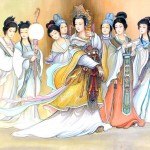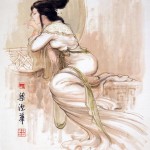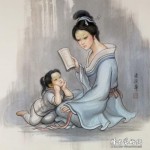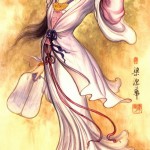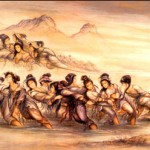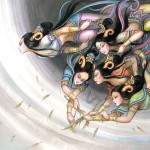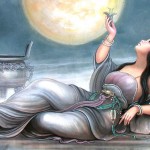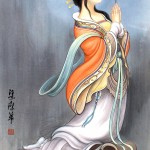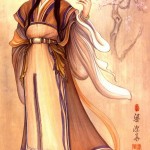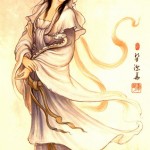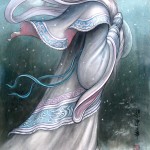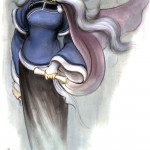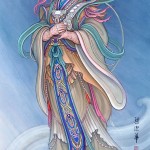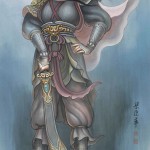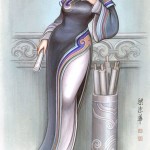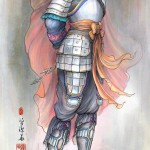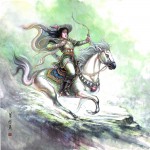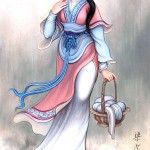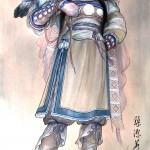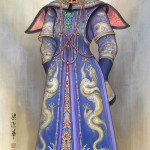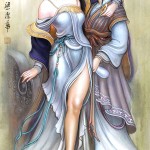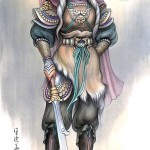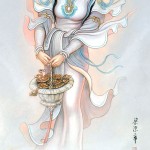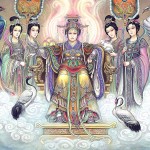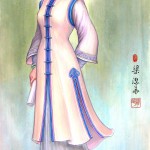A friend of mine was doing some research of 梁潔華 (Annie Wong-Leung Kit Wah)and since I am a huge fan of ancient China (especially Tang Dynasty), he decided to shared his findings with me. I was amazed by the lovely paintings, which were created by their modern, renowned artist. Her artwork had quickly became a favorite of mine.
Dr. Wong-Leung is a Hong Kong native and committed to promoting Chinese culture, arts and education throughout the world. For the past few years, she has visited mainland China, the United States, Europe, Germany, Switzerland, France and Italy, Australia and Canada, exchanging of Chinese and Western culture and education.
Her paintings consist of fine brushwork, soft color palette and beautiful calligraphy; mostly illustrating historical and religious (Buddhist and Taoist) female figures. Definitely something not to miss if you are interested in ancient Chinese culture.
Of all modern painting illustrating historical figures, I would have to say that 梁潔華’s are the most beautiful and elegant.
Only portion is shown below, please click on image for full view.
Images copyright of 梁潔華, courtesy of bbs.tecn.cn & 中國禪林畫院秘書處監製
Possibly Related Posts:
- Picspam of my favorite fragrances
- Picspam of recent anime and manga that I was intrigued by
- Picspam of my favorite bands of this week
- Picspam of recent food obsessions
- Favorites: Male Seiyuus
